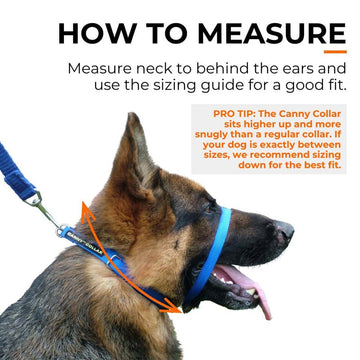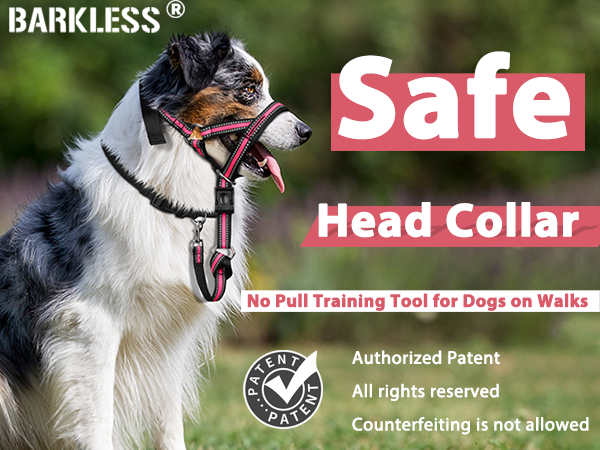If your dog pulls or gets restless the moment you bring out the head halter, you’re not alone. Teaching your dog to wear a head halter calmly can make walks more enjoyable for both of you.
But how do you do it without causing stress or resistance? In this guide, you’ll learn simple, gentle steps to help your dog get used to the head halter comfortably. Keep reading, and soon your walks will be smoother and more relaxed than ever before.
Benefits Of Head Halters
Head halters give better controlduring walks. They help guide your dog’s head easily. This control stops pulling and makes walks calm and fun.
Dogs pull lessbecause the halter gently directs their head. Pulling becomes harder, so dogs learn to walk beside you. This helps reduce stress for both you and your dog.
Head halters keep dogs and owners safe.They stop dogs from lunging or running away. This lowers the chance of accidents or injuries. Owners feel more confident and relaxed on walks.

Credit: www.thedogoutdoors.com
Choosing The Right Head Halter
Types of head haltersvary by design. Some have a loop for the nose, others add straps around the neck. The right type helps control your dog’s head gently.
Proper fit and sizematter a lot. A halter too tight can hurt, too loose can slip off. Measure your dog’s nose and neck carefully. Choose a size that fits snug but comfy.
Material and comfortaffect your dog’s willingness to wear the halter. Soft, padded materials cause less rubbing or chafing. Lightweight fabrics keep your dog cool and happy.
Introducing The Halter Slowly
Let your dog smell the halterfirst. Hold it near their nose. Let them sniff and get used to the new item. Do not put it on right away. This helps your dog feel less scared and more curious.
Give treats or praisewhen your dog stays calm near the halter. Calm behavior means no pulling or barking. Reward with a small snack or gentle petting. This shows the dog that the halter is not scary but good.
Initial Wearing Sessions
Start by letting your dog wear the head halter for a short time. Only a few minutes at first. This helps your dog get used to it without stress.
Give treats and praiseduring and after wearing the halter. This makes your dog feel happyand want to wear it more.
Watch your dog closely for signs of discomfort. Look for scratching or shaking the head. Stop if your dog looks upset.
Building Tolerance Over Time
Start by letting your dog wear the head halter for a few minutes each day. Slowly increase the timeas your dog feels more comfortable. Keep sessions short and positive to avoid stress.
Use treats and playto make the halter a fun experience. Give your dog a treat every time you put the halter on. Play a favorite game right after putting it on to build good feelings.
Watch your dog’s body language. Stop if you see signs of fear or stress. Move back to shorter wearing times or more treats. Be patient. This helps avoid negative reactionsand builds trust.

Credit: www.amazon.com
Practicing Indoors First
Start by letting your dog wear the head halterinside your home. Let them get used to the feeling without walking. Use treats and praiseto make wearing the halter a good thing.
Encourage your dog to walk around the housecalmly. Keep the leash loose and avoid pulling. This helps the dog feel relaxed and safe.
Short sessions work best. Let your dog stop and sniff. This builds trust and comfortwith the new gear.
Patience is key. Let your dog move at their own pace. Soon, they will accept the halterand enjoy walks more.
Transitioning To Outdoor Walks
Start walking your dog in quiet areaswith few distractions. This helps your dog feel safe and calm. Keep sessions short and positive. Use gentle praise to encourage good behavior. Let your dog get used to the head halter in these calm spots first.
Stay calm and in control during walks. Hold the leash firmly but gently. Avoid pulling or sudden moves. Keep a relaxed voice to soothe your dog. This helps your dog trust youand follow your lead. Remember, patience is key to a smooth transition.

Credit: www.amazon.com
Common Challenges And Solutions
Resistance to wearingthe head halter is common at first. Dogs may try to paw it off or shake their heads. Patience is key. Offer treats and praise when the dog stays calm. Start by letting the dog sniff the halter before trying to put it on.
Discomfort signsinclude pawing at the face, rubbing the nose, or trying to remove the halter. These signs show the dog is not used to it yet. Adjust the time the halter is worn slowly, beginning with just a few minutes. Always reward calm behavior to build positive feelings.
Adjusting the halter fitis important for comfort and control. The halter should fit snugly but not tight. Use the straps to make small changes. Check that it does not rub or pinch the skin. A well-fitted halter helps the dog walk better and feel relaxed.
Tips For Consistent Training
Keep training sessions short and frequent. Five to ten minutes daily works best. This helps your dog stay focused and not get bored. Use high-value rewardslike tasty treats or favorite toys. These encourage your dog to wear the head halter happily.
Stay patient and positive. Some dogs take time to adjust. Praise your dog often with kind words and gentle pets. Avoid pulling or forcing the halter on your dog. Let your dog explore it at their own pace.
Frequently Asked Questions
How To Introduce A Head Halter To My Dog Gently?
Start by letting your dog sniff the halter. Reward calm behavior with treats. Gradually place it on their nose for short periods. Increase wear time slowly while offering praise and treats to build positive association.
How Long Does It Take To Condition Dogs To Head Halters?
Most dogs adjust within 1-2 weeks with daily, gentle training sessions. Consistency and positive reinforcement speed up the process. Avoid forcing the halter to prevent fear and resistance.
What Treats Work Best During Head Halter Training?
Use high-value, soft treats your dog loves. Small, tasty treats keep their focus without overfeeding. Treats should be easy to eat quickly to maintain training flow.
Can Head Halters Cause Discomfort Or Harm To Dogs?
Properly fitted head halters are safe and gentle. Ill-fitting halters can cause discomfort or skin irritation. Always check fit and watch your dog’s reaction during training.
Conclusion
Training your dog to wear a head halter takes time and patience. Start slow and be gentle with each step. Reward your dog with treats and praise to build trust. Practice short sessions before walks to keep your dog comfortable.
Remember, every dog learns at its own pace. Stay calm and consistent during training. Soon, walks will become more enjoyable for both you and your dog. Keep encouraging good behavior, and the head halter will feel natural. Patience and kindness make all the difference.
Your effort helps create happy, safe walks together.





